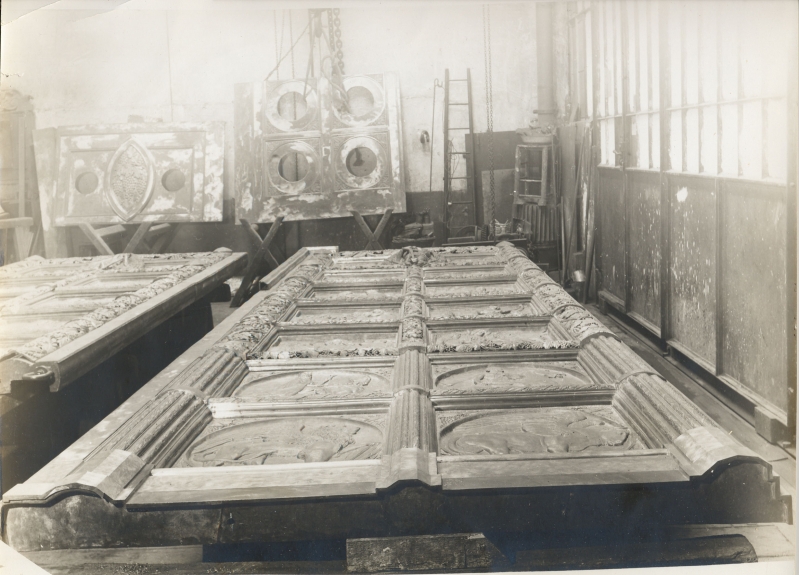History and Process
History and How it Works
History
In 1983, The Reverend William D. Eddy, Rector of Christ Episcopal Church, Tarrytown, sought to have Tarrytown native Washington Irving memorialized at Westminster Abbey’s Poets’ Corner. Unsuccessful, he approached prominent American institutions with the idea of creating an American Poets Corner. At the Cathedral, Reverend Eddy’s idea was met with enthusiasm by The Very Reverend James Parks Morton, who invited Daniel Haberman to be the first Poet-in-Residence. A system of Electors, chosen by the Poet-in-Residence to consult with him on the selection of inductees, was put in place and continues today with some modifications.
The first inductees were Walt Whitman, Washington Irving and Emily Dickinson: an iconic 19th century trio who in their singular ways embodied the emerging American character. Walt Whitman’s expansiveness, exuberance and democratic love of man and nature; Emily Dickinson’s ecstatic and solitary genius; and Washington Irving’s brilliant rendering of the tall tales, folklore and recent history gathered in his many trips around the country define types recognizable in American literary culture today.
Early Poets Corner Electors included Eudora Welty, William Jay Smith, Joseph Brodsky, Richard Wilbur, John Hollander and Robert Penn Warren, who read from Walt Whitman at the inaugural ceremony on May 7, 1984. Initially, two writers were inducted each year, and there were a number of events related to the induction into the Poets Corner. Since 2000, one writer has been inducted each year.
The Poets Corner and Cathedral poetry events have become an integral part of the literary landscape in New York. The Poets Corner, beloved by visitors, has earned respect for its choices of inductees, and for the high quality of its Electors and Poets-in-Residence, which include 17 U.S. Poet Laureates and winners of every literary prize an American writer can aspire to, including the Nobel.
How It Works
The Cathedral Poet-in-Residence, appointed by the Dean, serves for a term of five years. The poet in turn appoints the Electors, for staggered terms, keeping in mind the original guidelines, which called for geographical and genre diversity. Every spring, the Poet-in-Residence invites each Elector to nominate a writer deceased for at least 25 years. The Electors and Poet-in-Residence discuss candidates and engage in balloting until consensus is reached. The Poet-in-Residence, in consultation with the Electors, chooses the line to be engraved on the stone.
Formal induction into the Poets Corner takes place on a Sunday in early November during Evensong. Within a few days of the induction, the Cathedral often hosts an evening of readings and conversation with scholars, poets, and friends and families (if possible) of the honoree. The Poet-in-Residence’s duties also include consulting on other poetry activities at the Cathedral.
